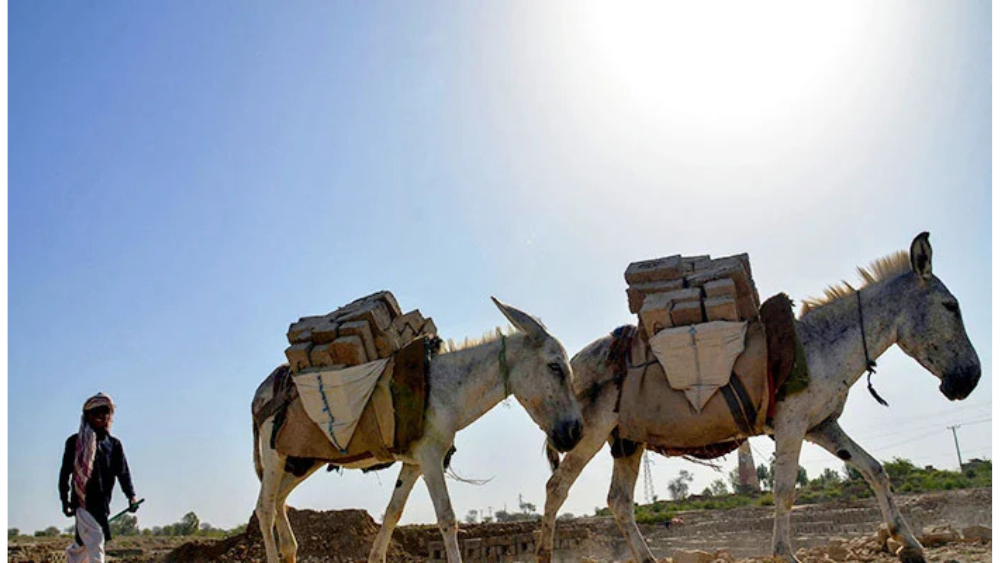The latest report from the Pakistan Bureau of Statistics (PBS) confirms that Punjab has the highest number of donkeys in the country, with a population of 2.403 million. This puts Punjab far ahead of all other provinces in Pakistan.
Sindh ranks second with 1.081 million donkeys, while Khyber Pakhtunkhwa comes third at 782,000. Balochistan records 630,000 donkeys, making it the province with the smallest total. The federal capital Islamabad has the lowest overall count, with only 4,000 donkeys.
(PBS Official Site)
A Lifeline for Rural Economies
The PBS findings highlight the continuing importance of donkeys in Pakistan’s rural economy. Across countless villages and remote regions, these animals remain a practical and affordable transport solution. Farmers, traders, and laborers depend on them for moving goods, water, and agricultural produce.
In areas where roads are poorly developed, and modern vehicles are either too expensive or impractical, donkeys fill the gap. They are reliable, adaptable, and able to work in terrains where machinery often fails.
Why Punjab Tops the List
Punjab’s dominance in donkey numbers is linked to its dense rural population, vast agricultural fields, and the presence of many small farming communities. Many of these areas still lack extensive mechanized infrastructure, making animal-powered transport indispensable.
Donkeys are also more economical than tractors or trucks. They require less maintenance, feed on inexpensive fodder, and can carry heavy loads despite their small size.
Cultural and Economic Significance
For many households, donkeys are more than just working animals — they are economic assets. They contribute to daily survival by generating income through goods transportation, especially for vendors and small-scale farmers.
Animal welfare organizations, like Brooke Pakistan, have noted that donkeys play a particularly important role for women in rural communities. Women often use them to carry water, firewood, and farm produce over long distances.
The Numbers in Context
According to PBS data, Pakistan’s overall donkey population has grown steadily over recent years. From 5.5 million in 2019–20, the number increased to 5.8 million in 2022–23 and now stands at 5.9 million in 2023–24.
(The News, Geo News)
The growth reflects not only rural demand but also possible economic opportunities linked to donkeys, such as hide exports in certain markets.
More Than Just Transport
Donkeys serve a variety of roles beyond carrying goods:
- Agricultural Assistance – transporting crops, fertilizer, and tools between fields.
- Household Support – carrying essentials like water, firewood, and construction materials.
- Market Access – helping traders transport products from farms to bazaars.
In remote parts of Punjab and other provinces, they are often the only viable means of transport for small-scale commerce.
Geographic and Infrastructure Factors
Punjab’s fertile plains and heavy agricultural activity explain part of the high donkey count. While cities like Lahore and Faisalabad are rapidly modernizing, rural Punjab still depends heavily on animal power.
Geographic challenges also play a role. In flood-prone or muddy areas, tractors and vehicles may get stuck, but donkeys can navigate with ease.
Balancing Tradition and Modernization
Experts suggest that the reliance on donkeys shows both economic necessity and cultural continuity. While infrastructure development is essential, traditional methods continue to sustain millions of people.
Policymakers face the challenge of improving rural roads and mechanized access while still supporting communities that depend on animal labor.
ALSO READ: 900+ Kg Donkey Meat Recovered from Islamabad
Outlook
Donkeys will likely remain a critical part of Punjab’s rural economy for years to come. However, animal welfare, veterinary care, and owner support programs are needed to ensure their sustainable use.
As Pakistan develops, balancing modernization with traditional livelihood tools like donkey-powered transport will be key to inclusive growth.





